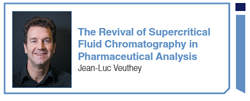LC Instrumentation: The State of the Art
LCGC Europe
In this extended special feature to celebrate the 30th anniversary edition of LCGC Europe, leading figures from the separation science community explore contemporary trends in separation science and identify possible future developments. We asked key opinion leaders in the field to discuss the current state of the art in liquid chromatography instruments.
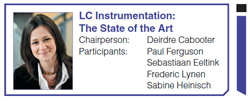
In this extended special feature to celebrate the 30th anniversary edition of LCGC Europe, leading figures from the separation science community explore contemporary trends in separation science and identify possible future developments. We asked key opinion leaders in the field to discuss the current state of the art in liquid chromatography instruments.Compiled by Alasdair Matheson, Editor-in-Chief, LCGC Europe
Deirdre Cabooter: What has been the most significant breakthrough in liquid chromatography (LC) in the past 30 years?
Paul Ferguson: In my opinion, the most important breakthrough in LC technology is not necessarily one that was driven by the chromatographic community (and was slightly more than 30 years ago). The development of the atmospheric pressure electrospray ionization interface allowing the simple coupling of LC with mass spectrometry has revolutionized our ability to conduct research at a pace not possible before this development. It has opened up scientific possibilities across so many disciplines it is hard to see a breakthrough that has had a greater impact. In The Chromatographic Society’s 2016–2017 survey of the most important separation science developments in the last 60 years, mass spectrometry (MS) hyphenation was voted as the most important development by 44% of respondees. The full results of the survey will be reported soon in LCGC’s digital magazine The Column.
Sebastiaan Eeltink: I think the research work of James Jorgenson is the most significant in LC. The seminal work describing the possibilities of ultrahigh-pressure LC (UHPLC) at over 5000 bar is complemented by excellent science (both practical and theoretical). This involved showing results with home-built systems and columns with capillary formats with sub-1-μm particles. His research led to the introduction of the first commercially available UHPLC system. Now, UHPLC is considered “the standard”.
Frederic Lynen: Although the development of UHPLC has been a great step forward in the field it has been a logical extension of known plate height and pressure concepts towards the use of smaller particles and higher pressures. By contrast, the current breakthrough of commercial comprehensive twoâdimensional liquid chromatographic systems can be considered a more disruptive technology compared to UHPLC. Comprehensive 2D-LC (LC×LC) also benefits from UHPLC in terms of reduced modulation time.
Sabine Heinisch: When UHPLC first launched in 2004, it was a tremendous advance in LC, paving the way for much faster separations and much higher peak capacities. Although HPLC often still remains the standard technique in quality control (QC) laboratories, UHPLC has definitely become the preferred technique in development laboratories, and has significantly reduced the time to develop LC methods. The coupling of UHPLC with MS has evolved significantly since then and so UHPLC–MS is now essential in many application areas, including pharmaceuticals, biopharmaceuticals, natural products, environmental analysis, and bio-energy.
Deirdre Cabooter: What are the most challenging problems or applications HPLC will face in the next decade?
Paul Ferguson: The areas where I foresee the greatest challenges in my industry (the pharmaceutical industry) result from the development of increasingly complex biomolecules and complex formulations, particularly antibody–drug conjugates (ADCs) and polymer–drug conjugates (PDCs). The need for improved efficiency and selectivity to resolve increasingly complex impurities and degradents to offer better product understanding is extremely challenging and may require a significant rethink on how we analyze these molecules. Might capillary electrochromatography (CEC) in a more robust form re-emerge as a possible solution to these challenges?
Sebastiaan Eeltink: Current UHPLC systems are not really compatible with 1-mm column formats packed with small particles because of a significant extracolumn band broadening contribution. Also, to increase performance significantly, that is, more than one order of magnitude, there is a need for 2D- and even three-dimensional (3D)âLC. There are some efforts from instrument manufacturers to address this, however, significant research is still required to mediate chromatographic dilution in LC×LC, and this prevents a breakthrough to make LC×LC(×LC) user-friendly.
Frederic Lynen: The complexity of modern biotherapeutics in terms of possible degradation and side products is becoming so large that the necessary peak capacities in 1D-LC and 2D-LC cannot be reached anymore. The availability of high-resolution mass spectrometry (HRMS) solutions has therefore become essential. The fast development of multiresidue methods that can be validated for solutes in such complex mixtures at UHPLC speed in one or two dimensions is becoming exceedingly challenging.
Sabine Heinisch: In nearly all applications from biopharmaceuticals to environmental analysis, samples are increasingly complex. As a result there will be a need for LC methods that provide much higher peak capacities than those achieved so far. Similarly, “on-line” sample treatment should also be improved to be substituted for “off-line” approaches, so that the total analysis time can be reduced and sample loss avoided, especially when a very low sample amount is available. To overcome these challenges, multidimensional techniques should be more widely used and adapted to industrial applications. These techniques include two-dimensional separations hyphenated to MS (heart-cutting, multi-heart-cutting, or comprehensive) and also analytical microchips with both sample treatment and separation steps included.
Deirdre Cabooter: What steps are needed to achieve higher resolution separations faster?
Paul Ferguson: This is a really difficult area to suggest improvements. We are at the edge of LC instrument practicality where there are diminishing returns on efficiency with reduced stationary phase particle size and associated dramatic increases in system pressure. I believe increasing the power range of instruments (flow × pressure) will only serve to make systems less robust and potentially more dangerous to use. As I mentioned previously, we need to identify a way to superimpose an additional separation mode on LC, such as the electrodriven mechanism of CEC, or a completely new approach to LC. The only other current option for higher efficiency separations may be provided by supercritical fluid chromatography (SFC) where particles smaller than 1.7 µm or longer columns could be used because of the reduced fluid density. However, this would require the development of higher pressure SFC systems to those currently available for optimal usage.
Sebastiaan Eeltink: Separations faster than 15 min can be best achieved in one-dimensional (1D)-LC mode, applying even higher pressures up to, for example, 2500 bar (but viscous heating should be solved). If there is more analysis time available, lets say more than 30 min, 2D-LC comes into play.
Frederic Lynen: A solution for the frictional heating problem needs to be developed in UHPLC. Various possibilities are thereby conceivable, such as the development of supporting materials allowing better dissipation of the heat. Alternatively, the possibilities offered by elevated temperature have not been sufficiently explored as the concomitant reduction in viscosity together with the faster mass transfer allow for faster analysis compared to what is possible with UHPLC on its own. The combination of temperature, UHPLC, and core–shell particle offers the most short-term promise in this context. In the longer term, fast- and high-resolution separations will require 2D-LC and 3D-LC solutions.
Sabine Heinisch: There are two ways to achieve higher resolution (higher peak capacity): increasing the pressure limit or increasing column permeability. Both approaches can increase the column length and hence the column plate number. To reduce the analysis time and hence increase the linear velocity, it is necessary to increase solute diffusivity and decrease particle diameter. Nowadays, in high temperature (HT)-UHPLC (100 °C, sub-2-µm particles, 1000 bar), 30,000 plates can be reached in one third of the time previously required in conventional HPLC (30 °C, 5-µm particles, 400 bar) to reach 10,000 plates. Kinetic curves can demonstrate that an additional threefold increase in efficiency along with a threefold decrease in analysis time would require the pressure to be increased up to 5000 bar while using sub-1-µm particles at temperatures above 150 °C. This requires dramatic improvements in both instrumentation and column manufacturing. Otherwise, comprehensive two-dimensional chromatography offers a very nice alternative for achieving huge peak capacities within a reasonable time.
Deirdre Cabooter: What bottlenecks still need to be tackled before multidimensional analyses can be implemented routinely?
Paul Ferguson: Multidimensional chromatographic instrumentation has developed significantly in recent years to a point where I believe it could be used in analytical environments routinely. The only area that still has not been adequately addressed is during the sample-switching step where sample dilution or band spreading can occur and I think there will be a focus on this over the next few years by manufacturers.
Sebastiaan Eeltink: A great challenge that still needs to be addressed is realizing very fast second-dimension separations with cycle times below 1 min. Furthermore, sample modulation in LC×LC is still an issue. At the ISSS 2017 conference in Vienna, Austria, I presented a novel microfluidic modulator prototype chip that can be used for sample transfer between columns in 2D-LC. This chip greatly reduces the complexity of the current 2D-LC instrument configuration. Furthermore, by extending the functionality of the chip, for example, by integrating a retentive trap column on-chip, we mediate chromatographic dilution in 2D-LC and solve the frequently encountered problem of flow-rate incompatibility when using a large internal diameter (i.d.) first-dimension column and a small internal diameter second-dimension column.
To achieve unparalleled separation performance, we are also developing another form of miniaturized LC: a microfluidic chip for spatial 3D-LC. Although we designed and developed the first prototype chip and achieved reasonable flow control, there are still major challenges to be tackled, including implementing orthogonal retention mechanisms and detection.
Frederic Lynen: Education and the validation of quantitative 2D-LC×LC approaches seem to be the main bottleneck today. In the last two decades many solutions have been proposed to solve the sample compatibility issue and to improve the necessary refocusing process at the beginning of the second column.
Sabine Heinisch: In my opinion, the following technical problems must be addressed before multidimensional techniques can be routinely used. First, there is a lack of convenient software able to correctly treat the complex amount of data obtained in multidimensional analysis. Second, comprehensive 2D-LC involves a lot of parameters and many analysts that would be interested decide to abandon this technique because of the difficulties involved in dealing with all these parameters. As for 1D-LC, there is a crucial need for optimization software to assist the analyst in this task. Some already exist but those are homemade programs and hence not available to the vast majority. Third, particular attention should be paid to extracolumn volumes, especially those located beyond the outlet of the second dimension column. These volumes can significantly decrease the peak capacity compared to the expected because second dimension peak volumes are usually very small.
Deirdre Cabooter: What developments do you foresee or what developments are needed from a detection point-of-view?
Paul Ferguson: Separation science urgently needs new quantitative detection approaches that are “universal”, that is, mass detection-unbiased by molecular structure or properties. If a flame ionization detector (FID) from gas chromatography (GC) could be successfully applied in LC this would be an excellent approach, but currently there are significant limitations as a result of mobile phase flammability. Alternatively, if LC could be coupled with electron ionization (EI) detection this would offer another approach. The only other research reported in the literature in this area is acoustic flame detection (AFD) under development by Kevin Thurbide at the University of Calgary (Canada), but progress in this technique appears to have stalled more recently. It is a challenging area, and I hope a step change, like that observed when charged aerosol detection (CAD) was commercially released, is under secret development by instrument manufacturers and will be released to the market soon!
Sebastiaan Eeltink: To make the world a bit greener and reduce solvent consumption, we need to downscale column dimensions. This has a direct effect on LC instrumentation because extracolumn band broadening needs to be addressed adequately. A major challenge will be the development of an ultraviolet (UV) lightâguiding flow cell that has a significantly smaller internal volume, but still provides high detection sensitivity. Most commercially available flow cells are currently not compatible with 1-mm i.d. columns.
Frederic Lynen: There is a need for sub-ppm universal detection. This is not currently possible because either one uses nebulization followed by optical evaporative light scattering detection (ELSD) or electrical (CAD) detection of the nonvolatile aerosol particles. Alternatively, MS detection is sensitive but too variable in terms of signal response. Novel fundamental research is required to try to find alternative molecular characteristics universal to organic molecules and that can be detected with higher sensitivity.
Sabine Heinisch: I feel that MS has become essential in LC. However, the cost is still very high and stops some analysts from installing MS in their laboratory. As regards MS detection, I foresee continued improvement in both speed and sensitivity. At the same time the hyphenation of ion mobility spectrometry (IMS) with LC is currently emerging. This attractive technique, mainly used to analyze biomolecules, leads to an additional separation dimension and also allows conformational assessment of the molecules. The resolving power of current IM-cells should be enhanced to provide more useful information on large biomolecules.
Deirdre Cabooter: Are there any other areas of hyphenation-such as online sample preparation- that you think need to be explored further?
Paul Ferguson: In my industry, the area of sample preparation is of great interest for hyphenation. There is much interest in the development of sampling devices for LC that can sample representative material from heterogeneous systems, such as biphasic synthetic reaction mixtures, without blocking. A move to smaller, but more efficient, automated sample preparation instruments would be very welcome.
Sebastiaan Eeltink: Whereas automation of sample preparation technologies and their hyphenation to GC is more or less common practice, this is not (yet) the case for HPLC. A possible reason for the lack of automated sample preparation instrumentation directly coupled to LC may be that it is very hard to mediate extracolumn band broadening effects. Also, for each application a dedicated workflow will need to be developed.
Frederic Lynen: The development of tools allowing universal and fully automatable sample preparation and concentration would be of great benefit to the field because currently much separation and detection performance is lost because of poorly optimized sample preparation approaches.
Deirdre Cabooter: Has miniaturized LC matured sufficiently? What significant developments are still needed in this field?
Paul Ferguson: First, I would preempt my response by saying I do not have oversight of this area, but it does not seem to have progressed over the last 10 or more years at the pace many people expected and still isn’t really applied extensively or routinely. There have been some commercial developments related to coupling of chip technology with MS interfaces that can be used in sample-limited applications, such as proteomics, but no developments that have a wide application. The vision of the late Michael Widmar (then of Ciba-Geigy) in the early 1990s for chip technologies for remote analysis applications has not been realized and feels like an opportunity missed.
Sebastiaan Eeltink: Working with a nano-flow system and also with nano-columns is still much harder than operating a conventional LC system. Also, packing small internal diameter capillaries is difficult, hence column performance can still be improved.
A nice alternative for packed capillary columns could be polymer-monolithic capillary columns, which have proven to be highly efficient for separating biomolecules (including peptides, oligonucleotides, intact proteins, and antibodies). Capillary column formats can be created in a reproducible manner and these are very robust at ultrahigh pressure because of the interconnected pore structure and because the monolith bed can be covalently coupled to the column wall. Furthermore, fineâtuning of the pore structure on the nanoscale level will boost efficiency and loadability.
Frederic Lynen: Today miniaturized LC only performs well under gradient conditions because the packing of nano- and micro-LC column remains problematic. Therefore, miniaturized LC works well for biomolecules where precipitation and dissolution aspects also play a role alongside the fundamental chromatographic aspects. The newly commercialized micropillar-array columns and other microfluidic chip-based columns offer new perspectives in this field. It cannot be said that miniaturized LC is a fully mature technique delivering its full potential just yet because it is still evolving.
Sabine Heinisch: Pumping systems for miniaturized LC (columns with internal diameters < 1 mm) have substantially advanced over the past few years to attain the standards of conventional LC. They are capable of delivering gradients without flow splitters under pulseâless flows and pressures up to 1000 bar. Furthermore, suitable connecting capillaries can now minimize extra column volumes. Until recently, miniaturized LC has mainly been considered in proteomics and, more generally, when the available sample amount is very low. In spite of some current disadvantages, such as the problem of leak location, clogging of tubing, and significant band broadening as a result of both the injection process and the UV cell, I guess that some key advantages will be considered in the future, including lower consumption of both mobile and stationary phase, easy use of elevated temperatures and temperature programming, better ionization efficiency with electrospray ionization(ESI)âMS detection, possible use of expensive additives, and easy implementation of on-line sample treatment in micro devices. I think that with the appropriate additional improvements in instrumentation, this technique will be more extensively used.
Deirdre Cabooter: Suppose you were an instrument manufacturer. To what development would you give priority to be incorporated in the next generation of LC instruments?
Paul Ferguson: Modern LC instruments are extremely powerful and it’s difficult to see many areas that could be easily improved. As I’ve mentioned previously, the area I would focus on would be improved detection approaches. While the ubiquitous UV-detector is extremely powerful, it has a major limitation in that its response is chromophore dependent. Evaporative detectors such as ELSD and CAD partially address this issue, but they also have some limitations and the need for a new universal detection approach is required.
I suspect there will be developments in portable or smaller modular systems that can offer point-of-sample generation analysis, for example, for on-line reaction chemistry analysis or remote environmental analysis, possibly customized for specific application or compound specific analysis.
Sebastiaan Eeltink: I would develop novel modulation strategies to make LC×LC applicable for routine use. There are also extreme software challenges for data visualization, peak detection, and integration, so these need to be addressed.
Frederic Lynen: The main limiting factor in HPLC is the lack of sensitive, cost-effective, and universal detectors. The availability of more sensitive universal detection could, for example, pave the way for open tubular approaches in nano-LC, which are currently not reachable because of the sample loadability issues.
More progress is also still needed in the development of a standard allowing the construction of LC–MS mass fragmentation spectra-based libraries. Currently, you are limited to the use of molecular weight (MW) based databases in LC–HRMS that are not suitable for many of the possible isomers for a single elemental composition.
Sabine Heinisch: If I were an instrument manufacturer, I would pay more attention to hyphenated techniques, such as LC×LC–MS, LC–LC–MS, LC–MS, and even LC–NMR, and I would further improve LC instruments by the use of suitable valve and splitting systems to offer more versatile possibilities. Furthermore, data processing in 2D-LC would be a priority. I would also be concerned by the possibility of switching from narrowâbore columns (2.1 mm) to microcolumns (1 mm) on the same UHPLC instrument without losing efficiency (with the possibility of conveniently adapting extracolumn volumes). Column ovens should be able to reach temperatures up to 200 °C with suitable preheating and cooling systems included. Finally, I think that software supporting method development should be incorporated in LC instruments and promoted more extensively by instrument manufacturers.

Paul Ferguson is an associate principal scientist, Pharmaceutical Technology and Development at AstraZeneca, Macclesfield, UK.
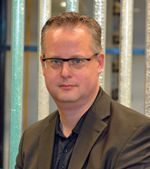
Sebastiaan Eeltink is a professor at Vrije Universiteit Brussel in the Department of Chemical Engineering, in Brussels, Belgium.
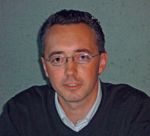
Frederic Lynen is a professor in the Department of Organic and Macromolecular Chemistry at Ghent University, Ghent, Belgium.

Sabine Heinisch is a team leader in Chromatography and Hyphenated Techniques at the Institut des Sciences Analytiques, in Villeurbanne, France.

Deirdre Cabooter is an associate professor in the Faculty of Pharmaceutical Sciences at KU Leuven, in Leuven, Belgium.
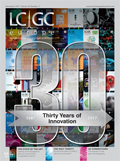
Polysorbate Quantification and Degradation Analysis via LC and Charged Aerosol Detection
April 9th 2025Scientists from ThermoFisher Scientific published a review article in the Journal of Chromatography A that provided an overview of HPLC analysis using charged aerosol detection can help with polysorbate quantification.
Removing Double-Stranded RNA Impurities Using Chromatography
April 8th 2025Researchers from Agency for Science, Technology and Research in Singapore recently published a review article exploring how chromatography can be used to remove double-stranded RNA impurities during mRNA therapeutics production.
Study Explores Thin-Film Extraction of Biogenic Amines via HPLC-MS/MS
March 27th 2025Scientists from Tabriz University and the University of Tabriz explored cellulose acetate-UiO-66-COOH as an affordable coating sorbent for thin film extraction of biogenic amines from cheese and alcohol-free beverages using HPLC-MS/MS.








